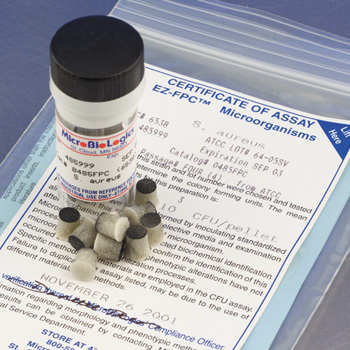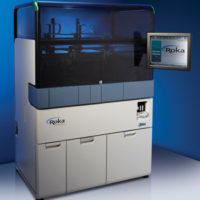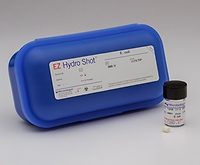Common wisdom holds that great things come in small packages. But do they come in pellet form? For the food microbiology laboratory that is implementing and maintaining a comprehensive quality assurance (QA) program, the answer is a resounding yes.
This particular small package comes with a long name: lyophilized microorganism preparation.
Lyophilization is a method of sublimation in which all liquid is removed from the microorganism to produce a freeze-dried product in pellet form, which--unlike a live culture--produces repeatable results and is shipping stable. The lyophilized pellets are used by food microbiology labs as reference stock cultures, assayed control microorganisms, process controls and various proficiency challenge tools in their efforts to document the lab's QA program to produce tests of known and defensible quality.
"Laboratories not only face increased regulatory and liability challenges that require better support documentation," says Forest Reichel, Director of Marketing with St. Cloud, MN-based MicroBioLogics, a leading provider of lyophilized microorganism pellets, "but those that are committed to achieving ISO 17025 accreditation or want to attain a certain level of proficiency in their lab also must find the right tools that help establish credible documentation of the lab's QA program. With so many types of methods, method validation styles and levels of validation available, there can be a certain amount of chaos involved in verifying the measurements or quality assurance practices within a laboratory are meeting required objectives."
MicroBioLogics, which produces and distributes a 3,000-item product line with more than 500 different lyophilized microorganism strains, has worked for more than 30 years on advancing the use of lyophilized pellets in microbiology labs worldwide. The company's primary goal has been to develop authentic, traceable and dependable products that help food microbiology labs meet the basic requirements of their QA programs, adds Reichel. In addition to its line of reference stock cultures that provide a quality control challenge to document the sensitivity and selectivity of the individual test methods used within each food lab, the company has developed lyophilized assayed control microorganisms that provide a quality assurance challenge specific to the food industry to be used as a process control in the lab.
"The food process control (FPC) pellets are manufactured to yield a predetermined concentration of a microorganism," says Reichel. "The strains are selected for 'fitness for purpose'—in other words, they are those most commonly used in the food laboratory and that have been researched and validated to support the verification of the various elements of the lab QA program. Because the assayed control microorganism preparations have a known value, the lab can challenge and document its internal proficiency, compare tests results with multiple labs to determine external proficiency, as well as challenge and document the reproducible control limits of a test method's accuracy and its ability to detect or enumerate specified target organisms in a food sample, and an analyst's proficiency--all the elements of the QA program.
"In traditional everyday usage, for example," he continues, "the assay controlled microorganisms provide a level of confidence to that laboratory that if the target microorganism is present in the unknown or line samples, they've created the correct environment to recover it and they can benchmark it."
Rapidity Through Efficiencies
Michelle Smoot, Corporate Director of Microbiology with Silliker Inc., a leading food safety and quality assurance company with an international network of ISO 17025 accredited laboratories, agrees. "The key attribute of the lyophilized pellet is that it provides a verifiable indicator of the lab's process, specifically whether the facility is meeting established QA standards. In using quantitated pellets, each with a known value, we're able to consistently recover specified levels of target organisms and use this information to establish statistical process control charts for a given When specified levels are not recovered, it indicates that there has been a change in the testing process. We need to understand what change has occurred in order to maintain quality assurance standards. We refer to these pellets as 'daily process control samples' versus 'positive controls.' The latter is used to verify media productivity and selectivity parameters, while the pellets, or daily process control samples, are used to monitor our actual process on a daily basis."
Smoot adds that a major benefit is that the laboratory can increase its efficiency at the same time it is monitoring the quality of its process. "For example, with the lyophilized pellets, the cell level per pellet is verified for each lot. Once verified, the remainder of the lot can be used daily without having to culture the organism and enumerate the inoculum level with each use, as is necessary with traditional stock cultures. For qualitative analyses, pellets having a specified level as low as 100 cells/pellet are used to prepare the daily process control sample in order to mimic the low level of organisms that may be present."
"This is where the rapidity really comes into play," concludes Reichel. "The lyophilization of microorganisms in the form of these pellets fits into the lab's rapid arsenal because they offer efficacy of use and this means that they get better data, faster."
www.microbiologics.com
Lyophilized Microorganisms: Quality Assurance in a Pellet




